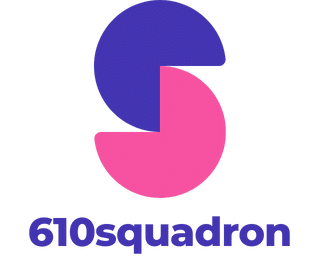What Are the Possibilities of Using AI for Real-Time Multilingual Conference Translation?

Welcome to the wonderful world of Artificial Intelligence (AI)! Today, we delve into its fabulous capabilities, focusing on the utilization of AI for real-time multilingual conference translation. With the rise of globalization and interconnectedness, the demand for quality interpretation services, especially in multilingual conferences, has drastically increased. But is AI up for the task? Can it replace human translators and interpreters? Let’s unravel this mystery together.
A Peak into the Language Landscape
Language, in its essence, is the most human thing there is. It’s the cornerstone of communication, understanding, and cultural identity. With over 7,000 languages spoken worldwide, the need for accurate translation and interpretation services is more critical than ever.
Lire également : How Is Haptic Technology Improving Accessibility for Visually Impaired Users?
Traditional human translators and interpreters have been playing a pivotal role in breaking language barriers. However, their work is often time-consuming, costly, and subject to human error. Also, given the fast-paced nature of today’s world, real-time language translation has become an integral part of global conferences.
That’s where AI steps in. With its ability to process data at superhuman speed and its ever-improving learning algorithms, AI offers numerous possibilities for real-time multilingual conference translation. But how does it do that?
A découvrir également : How Are IoT-Enabled Smart Glasses Revolutionizing Field Services and Repairs?
The Power of Machine Translators: Google’s Example
It’s impossible to talk about AI translation without mentioning Google. As pioneers in the field, Google has developed powerful machine translation tools that utilize AI to provide real-time translation services.
Google’s AI-based translation journey began with Google Translate, a tool that has made translation a breeze for millions of people worldwide. However, while Google Translate is perfect for translating a word or a phrase, it often fails to deliver the desired quality when translating complex sentences or speeches. It lacks the human element of understanding nuances, cultural references, and context.
To address these issues, Google has developed new AI-based tools like Google Translatotron and Google Interpreter mode. These tools can translate speech directly into another language, maintaining the speaker’s voice and intonation. They are designed to understand the content of the conversation, thereby providing more accurate translations in real-time.
Making the Impossible Possible: AI Interpreting
Venturing into the realm of interpreting, AI has shown promising developments. AI-powered interpreting tools are not just translating the words you say. They are learning to understand the context, the cultural nuances, and the tone of the conversation.
One such AI interpreting tool is Wordly. Wordly’s AI-powered system can provide instant interpretation in over 15 languages. It listens to the speaker, understands the context, translates it into the desired language and speaks it out, all in real-time.
Services like these have the potential to revolutionize the interpreting industry, making it possible to have seamless multilingual conferences. However, they are not without their challenges.
Challenges and Ways Forward in AI-Based Translation
While AI-powered translation tools have come a long way, they are still a work-in-progress. One of the main challenges they face is understanding the nuances and subtleties of human speech. They often struggle with context, slang, idioms, and cultural references.
Additionally, these tools require a significant amount of data to learn and improve. However, for many languages, especially the less widely spoken ones, this data is hard to come by. As a result, the quality and accuracy of translations for these languages often suffer.
Despite these challenges, the future of AI in translation and interpreting looks promising. With advancements in machine learning and increasing availability of data, AI tools are continually improving. They are learning to understand human speech better, improving their ability to handle complex conversations, and expanding their language capabilities.
The Human Element: Can AI Replace Human Interpreters?
This brings us to the burning question – can AI replace human interpreters? The answer is, at least for now, no. While AI can process information at an unparalleled speed and provide quick translations, it still lacks the human touch.
Human interpreters bring more to the table than just language translation. They understand the cultural nuances, read the room, interpret non-verbal cues, and add a human element to the conversation. Also, they can handle difficult and sensitive situations with tact, something that AI, in its present state, is incapable of doing.
The future, however, seems to be a blend of AI and human efforts. AI can provide the initial translation, which can be polished and refined by human interpreters. This combination could offer faster, more accurate, and cost-effective translation services, bringing us closer to a truly global, multilingual world.
As we continue to journey into this exciting AI-powered future, one thing is clear – the possibilities are endless. And as always, the human element remains irreplaceable, guiding and refining the AI tools to better serve us.
Molding the Future: Role of Neural Networks and Machine Learning
Diving deeper into the technological aspect, it’s critical to understand the role of neural networks and machine learning in fueling the progress of AI-based translation. These key components make it possible for AI to understand, learn, and improve its translation abilities.
Neural machine translation, a subset of AI, employs neural networks to perform translations. These networks are designed to mimic the human brain, enabling the machine to process and interpret data in ways similar to how humans do. They are the reason why AI can go beyond the mere word-to-word translation and delve into the realm of understanding context and cultural nuances.
Machine learning, on the other hand, is the process that allows AI to learn from experience, much like humans. As the system encounters more data (in this case, languages and translations), it learns and improves. It studies patterns, develops understanding, and refines its approach accordingly.
Take Google’s neural machine translation system, for instance. It uses both neural networks and machine learning to provide better translations. It learns from millions of examples to understand the context, grammar, and nuances of the language. The more it translates, the better it gets.
However, feeding data into these systems isn’t a simple process. It requires careful curation and continuous updates to ensure the AI system is learning from the correct and relevant examples. This is where human translators and interpreters come in. They play a crucial role in training these AI systems, guiding them to understand the intricacies of languages, their idiosyncrasies, and their cultural nuances.
Conclusion: AI and the Future of Multilingual Conference Translation
The debate around AI replacing human translators and interpreters continues. However, the possibilities of using AI for real-time multilingual conference translation are undeniable. AI systems, backed by neural networks and machine learning, are continuously improving. They are expanding their language capabilities, understanding human speech better, and handling complex conversations more accurately.
But, as we’ve seen, they are not without their challenges. Understanding the subtleties of human speech, grappling with cultural references, and requiring vast amounts of data for learning are just a few hurdles they face. And while AI can translate at an impressive speed, it still lacks the human touch, the ability to understand the room, interpret non-verbal cues, and handle sensitive situations with tact.
Looking ahead, it’s likely that the future of real-time multilingual conference translation will be a blend of AI and human efforts. AI will provide the initial translation, which can then be polished by human interpreters, ensuring speed, accuracy, and the vital human touch. As we move forward, AI tools like Google Translate, Google Translatotron, Wordly, and Boostlingo Pro continue to shape the future of language translation technology.
On this thrilling journey into the future of AI-powered translation, one thing remains clear – the human element is irreplaceable. It will continue to guide and refine AI tools, making them better suited to our needs. After all, language is the essence of being human, and its translation, a task of immense responsibility and sensitivity, should be treated with the respect it deserves.
As we stand on this precipice of technological advancement and human endeavor, the future looks promising, exciting, and above all, global. AI is not just about machines learning languages, but about bringing people together, breaking down language barriers, and fostering understanding and connection in a multilingual world.
